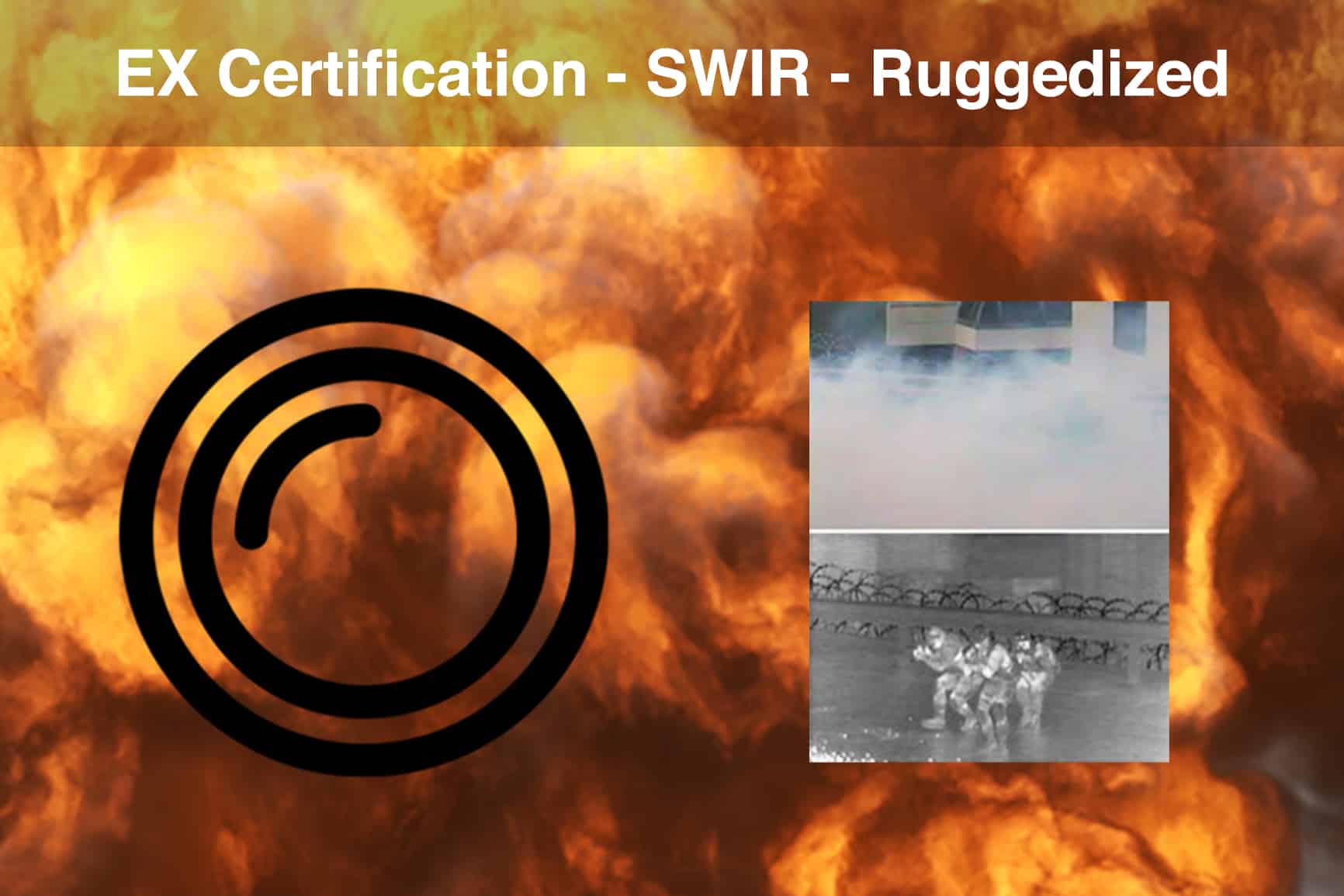This post provides non-technical staff with a super short explanation of three different terminologies we work with daily.
This information gives you a brief insight into what to consider when getting products from us, but you do not need to have in-depth knowledge yourself; we handle that for you. We design and build optical sensors and print boards to go with them every day.
The application for your optical systems can be industrial, defence, medical, or for use in space. Some systems are stationary, and others are not.
Often, our systems are mounted and used on, or by a person, a plane, a ship, car, armed vehicles, or alternatively an production machine. They must sustain a lot of stress, and they must be safe to operate at all times, providing the customer with the best possible value according to their needs.
EX certification (Ex/ATEX)
Many systems are placed in an environment not suited to usual product standards, where a small spark can ignite a high explosive gas cloud. It can be in an industrial gas-intensive environment or in a defense system, let us say an (MBT) Main battle tank. It can also be something as simple as lighting on an oil drilling rig.
Here the manufacturer or designer ensures that there is no possible way for an electrical spark, even if produced by mistake can come into contact with the surrounding explosive environment. So the products must have a seal or be embedded in materials, disabling any spark to ignite the potential gas-intensive atmospheres.
Ruggedized optical solutions
You can normally divide Ruggedization this section into three subsections seen below.
- Industrial Ruggedization
- Ingress Protection Ruggedization
- Stability Ruggedization
For now, we will not address each one of them but make it as easy to understand as possible.
If you need an operational optical system to function under all circumstances where there is a lot of shaking of the actual lens system, making it hard to provide and maintain a steady clear picture, and the environment can impact the long term function of the system, then you might want to look for a Ruggedized system, sometimes it also needs to be EX certificated as well, and with SWIR functionality, which leads us to the last topic of this post.
SWIR
Short-wave infrared light is typically defined as light in the 0.9 – 1.7μm wavelength range.
With SWIR optimized systems, you can see images not possible with standard optical systems. The wavelengths are different, and this enables you to get the information you will not usually see. Some SWIR applications are designed for inspection in industrial production, some for medical or defence usage.
The application of EX, Ruggedization, and SWIR is dependable on your specific needs. Professional optical solutions will often consist of one of the three things, making your selection of a supplier or design partner difficult if you do not understand what they mean.
We hope you now have a brief insight into these three things, and you are always welcome to ask us for more information in this regard or visit our webpage.


